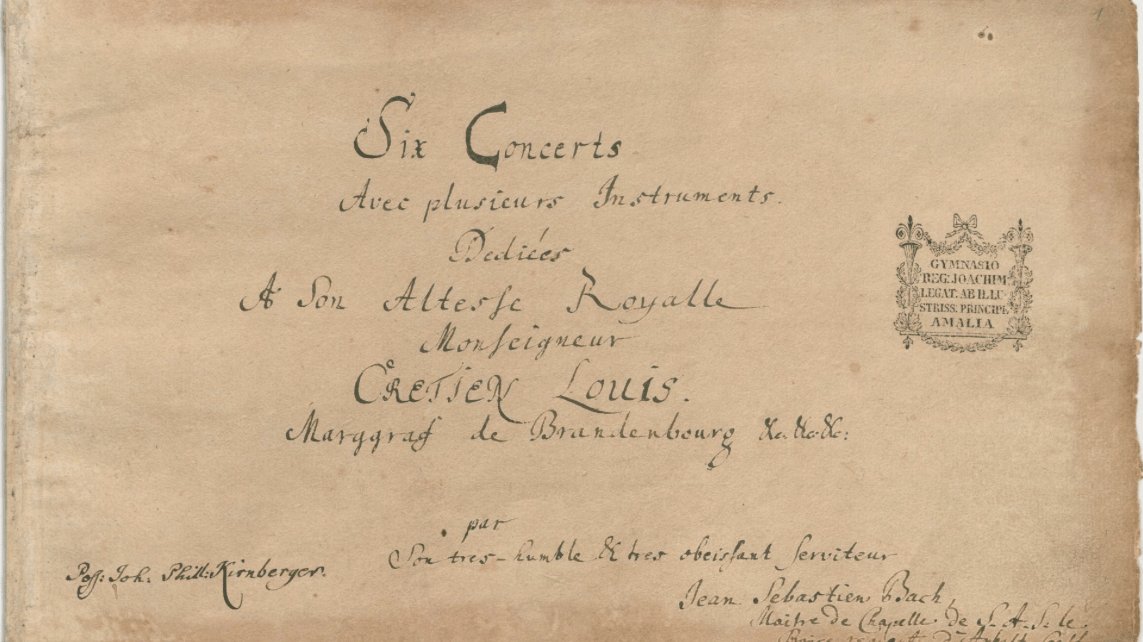Right now, somewhere in the vast, interstellar expanse beyond the edge of our solar system, NASA’s Voyager 1 space probe, launched on September 5, 1977, continues to wander into the eternity of deep space. Onboard the small, brave craft is a Golden Record documenting the fragile existence of humanity on our pale blue dot in the cosmic sea. The opening musical track on the Golden Record is the first movement of Bach’s Brandenburg Concerto No. 2 in F Major, performed by Karl Richter and the Munich Bach Orchestra.
It might have surprised Bach to know that an excerpt from Brandenburg would one day serve as humanity’s musical calling card. As I outlined in the first post of our Brandenburg series, these six groundbreaking Concertos were compiled as the equivalent of Bach’s résumé for a new job. The job inquiry wasn’t successful. Prince Ludwig, the Margrave of Brandenburg seems to have shown little interest in this music.
Each of the six Concertos is written for a different combination of instruments. Concerto No. 2 features an exuberant dialogue between the trumpet, recorder, oboe, and violin, set against a backdrop of strings and continuo. A sublime drama unfolds as these four voices weave together in different combinations. The valveless natural trumpet soars to euphoric and virtuosic heights.
Bach did not include a tempo marking with the first movement, but it is clearly intended to erupt with a sense of joy and celebration. Notice the way every voice is equally important. At one point, the main motive is even stated in the cello’s continuo line. Listen to the way this music is constantly throwing us harmonic surprises.
The contemporary American composer John Harbison points out one particularly interesting passage in the Andante second movement:
The most unusual moment in this concerto occurs near the end of the middle movement, in which the trumpet and orchestral strings are absent. The melody disappears, and a bare pattern continues on, abandoned by the melody. Could this be an image of depression, resignation? In any case its return, signaled by the violin, feels like a reprieve.
The final movement (Allegro assai) is an infectious expression of pure joy and celebration. Listen to the way each of the four solo voices enters individually, forming a festive fugue.
Five Great Recordings
- Trevor Pinnock and the European Brandenburg Ensemble Amazon (This 2007 recording is featured, above).
- Gottfried von der Goltz and the Freiburger Barockorchester
- Rinaldo Alessandrini and Concerto Italiano (2014)
- Akademie für Alte Musik Berlin
- Reinhard Göbel and Musica Antiqua Köln

